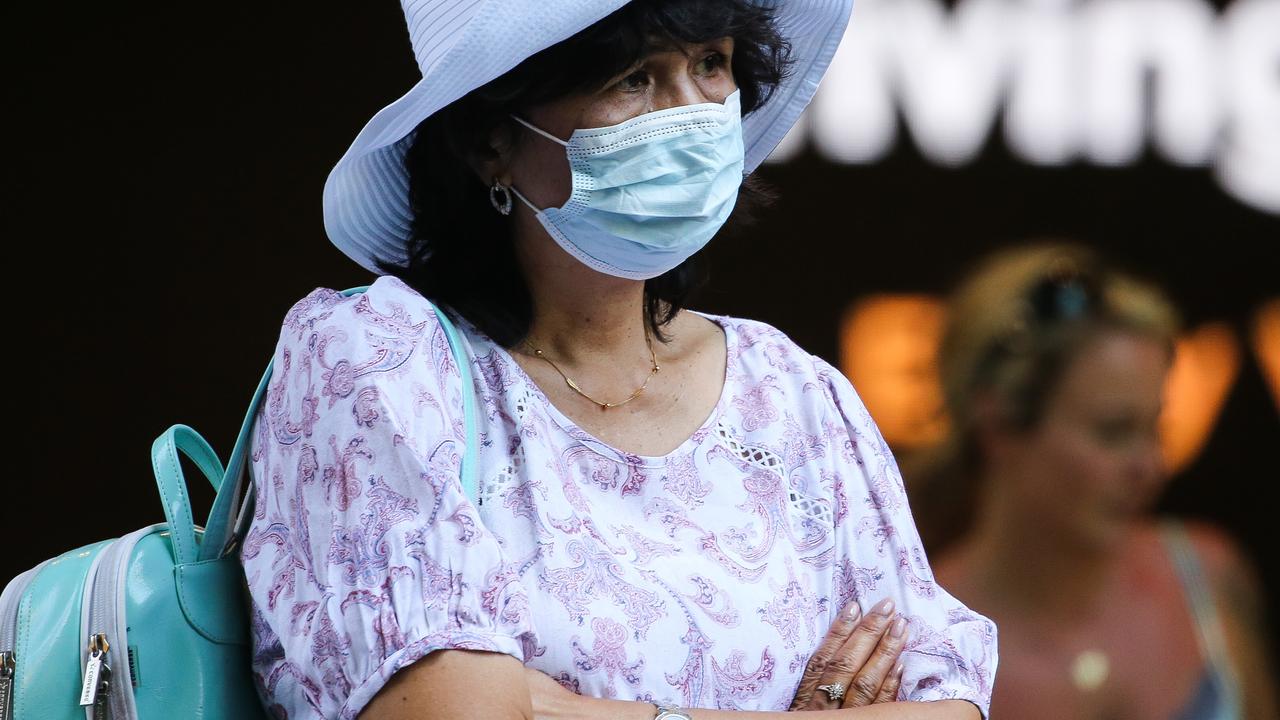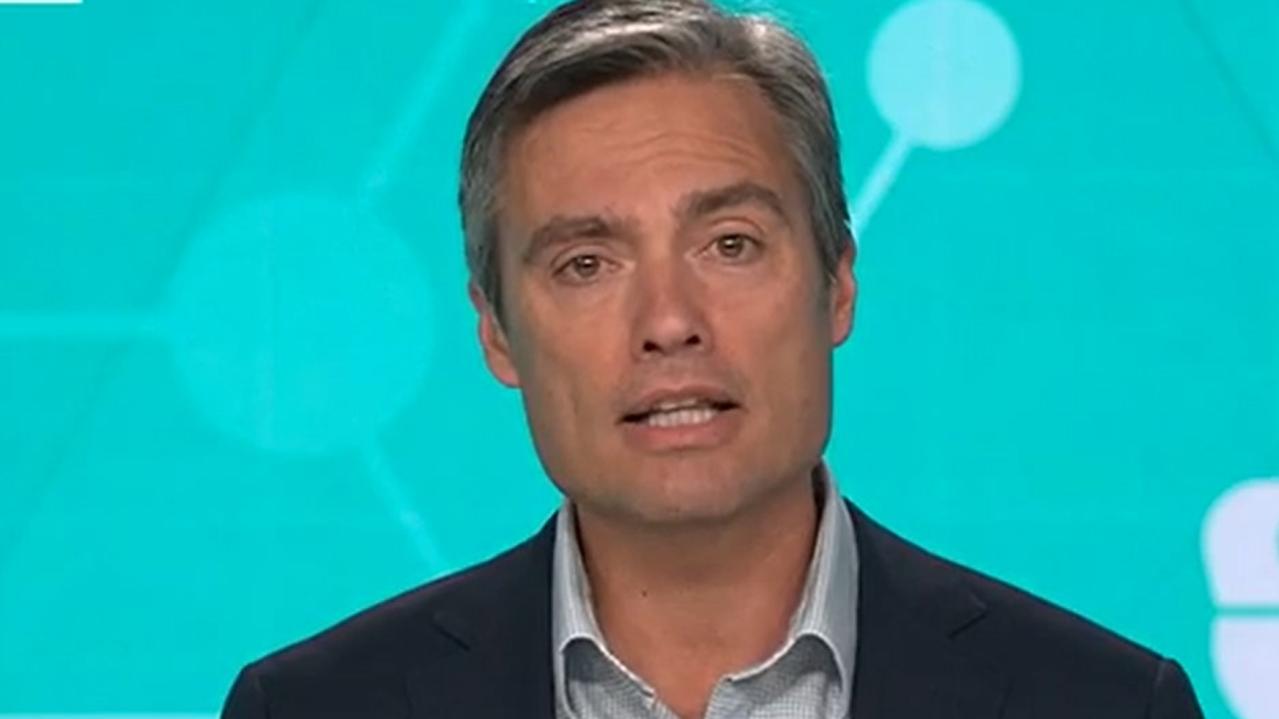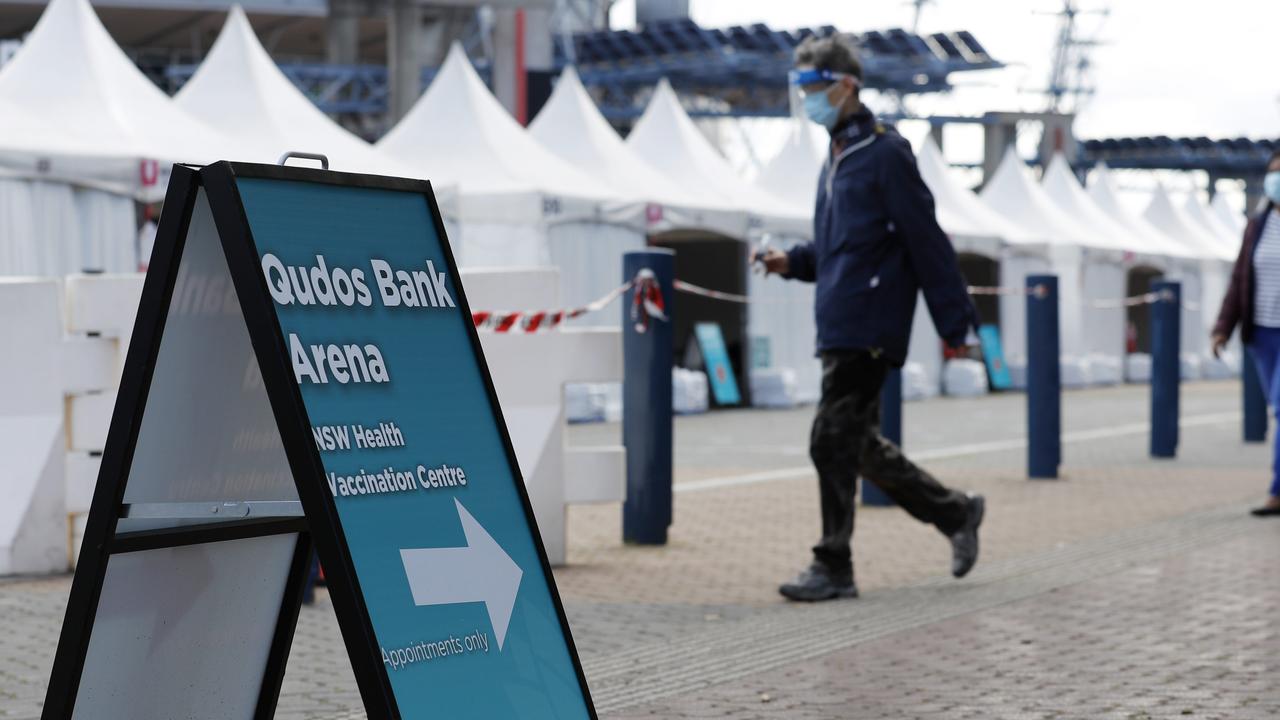Scott Morrison called on to address First Nations vax rates
As states look to reopen to the rest of Australia, the lagging vaccination rates of one group is a major cause of concern.
An urgent meeting between Indigenous leaders, health professionals and Prime Minister Scott Morrison has been requested as the Covid-19 vaccination rates of First Nations people lag behind the rest of the population.
The letter, penned by more than 20 leaders including Professor Marcia Langton and Djambawa Marawili, outlines the “grave concerns” held as states begin to significantly ease restrictions.
“The public warning by our highly respected cultural leaders, Djambawa Marawili AM, Barayuwa Mununggurr, Maxine Charlie and others around the country, of the deaths and loss of culture if Covid-19 spreads in remote Aboriginal communities, has filled us with dread and motivated us to have our concerns put on the record,” the letter reads.
“Despite the efforts of the Aboriginal Community Controlled health sector, we have unfortunately not seen the same levels of vaccination achieved in our communities as in the wider population.”
Housing, access to essential supplies and a lack of sufficient health infrastructure in remote communities are cited as the key risks for First Nations people.
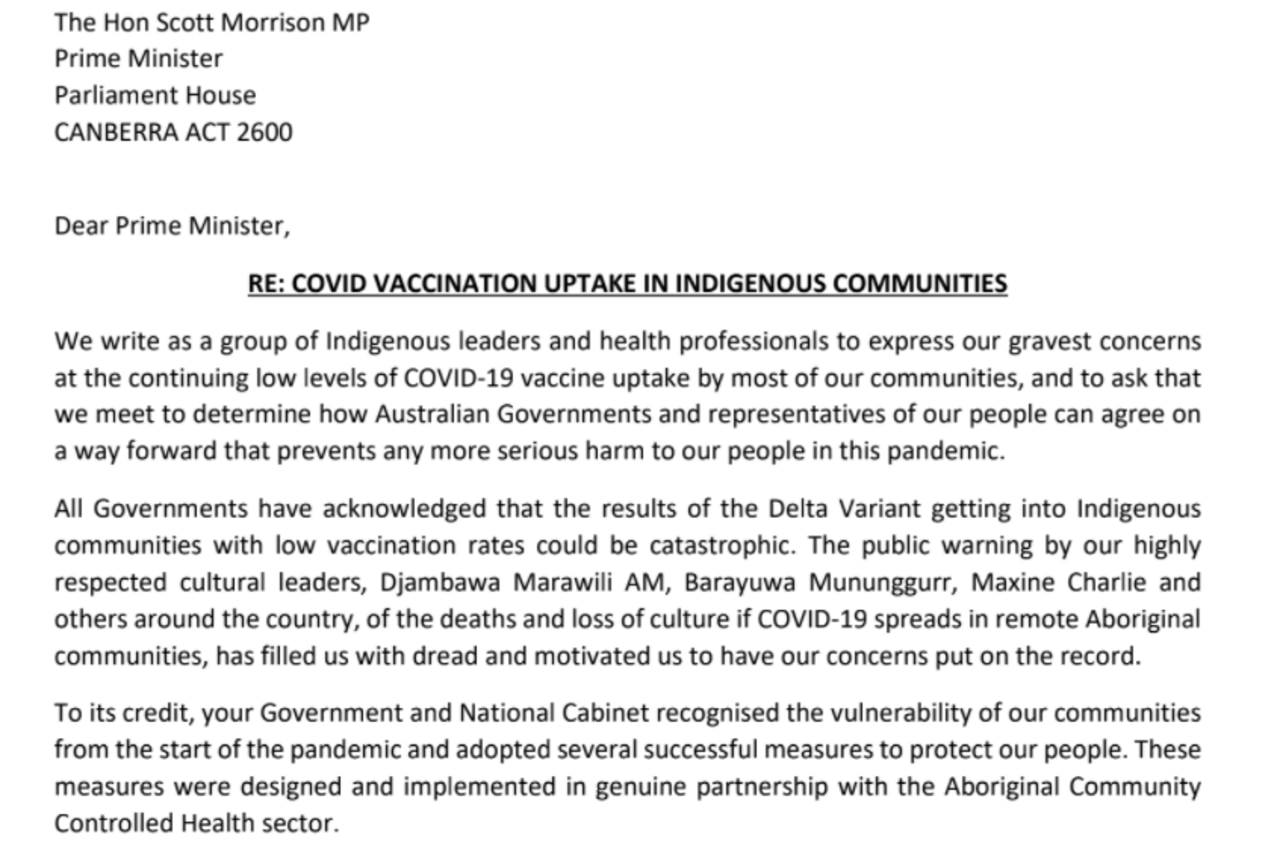
“It is evident that quarantine is currently near-impossible for those in overcrowded housing, as well as those without ready access to food, grocery and pharmaceutical delivery services,” the signatories write.
Currently more than 75 per cent of Australians aged 16 and older are fully vaccinated against Covid-19.
That figure sits around 50 per cent for Indigenous Australians. The gap between vaccinations for first and second doses between the general population and First Nations people is 25%.
On Wednesday, the chief of Australia’s vaccine rollout, Lt General John Frewen, said on current forecasts he does not expect to hit the 80 per cent double dose benchmark for First Nations people until January 2022.
“On current rates we will get nationally to an 80% per cent first dose rate in the first week of December,” he told a senate estimates hearing.
“Best case, four weeks later, you could get to 80% fully vaccinated in the first week of January.
“But of course there are many human variables.”
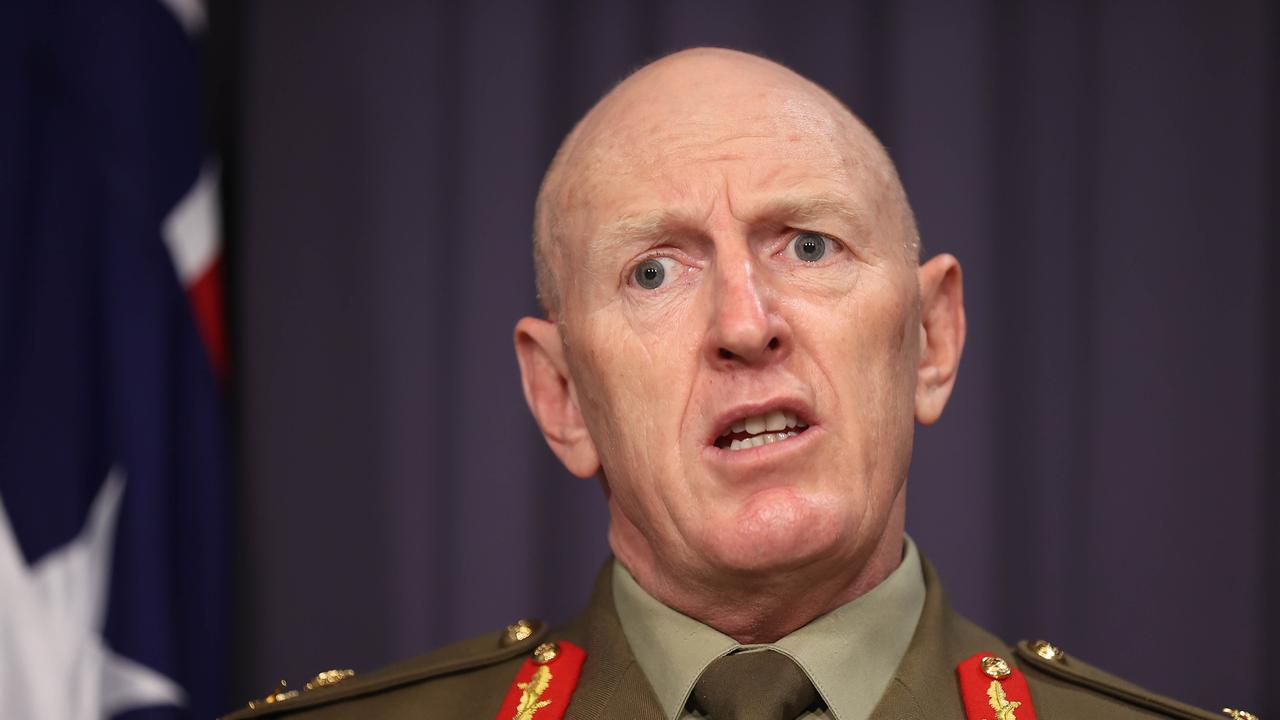
No jurisdiction has reached 80 per cent of its Indigenous population fully vaccinated. So far, only NSW and ACT have reached the 70 per cent target.
The consequences of low vaccination rates in Indigenous communities was laid bare when the delta strain ripped though western and far western NSW.
Professor Peter Yu, vice president First Nations at ANU, said he had “watched in horror” as Covid spread rapidly through Indigenous communities.
“The most important thing we can do now is the development and publication of an agreed strategy between all governments, the Aboriginal Community Controlled health sector and other Indigenous experts that seeks to achieve the highest possible vaccination rates in our communities,” he said.
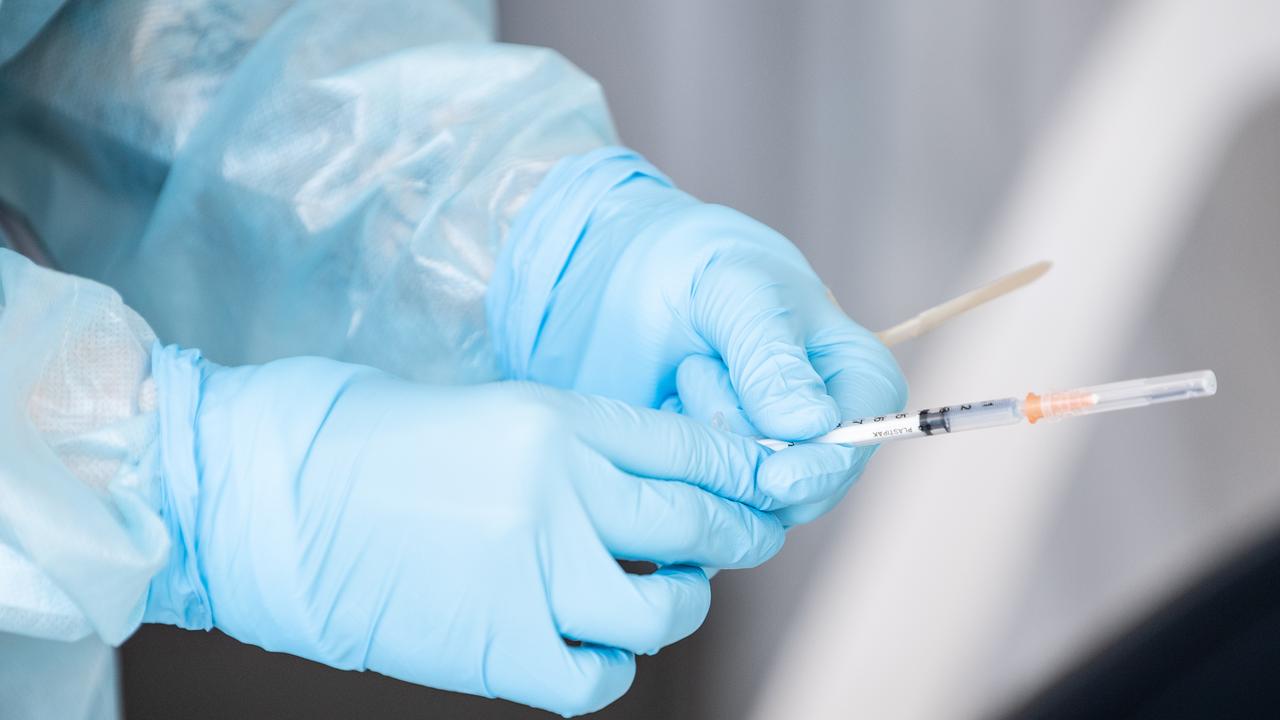
Despite being prioritised in Australia’s vaccine rollout, the changing advice over AstraZeneca and the complications in delivering the jab to remote and regional communities caused delays.
Aboriginal and Torres Strait Islander social justice commissioner June Oscar said the spread of misinformation about the vaccines to First Nations communities undermined health and lives.
“The production and spread of misinformation about the vaccines to First Nations communities is undermining our health and our lives. We need strong collective leadership from across all sectors, community and faith-based groups to support our communities to get access to the right information and to get vaccinated.
“Catastrophe is avoidable—it will require effective and targeted measures to close the gap in vaccination rates for First Nations Australians and a commitment by Australian governments to vaccine parity before we open up the country.

